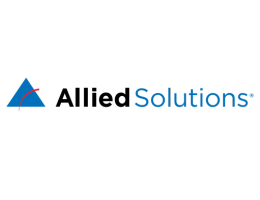The pandemic changed many logistical elements of employment. Employees had to figure out how to work from home, while simultaneously making other at-home adjustments. Managers spent months adjusting to these same work-life changes, while also learning how to continue to lead their teams in this new or 'now normal’. As branches and offices re-open, employers and employees are needing to once again adjust and adapt.
Work should serve as a stabilizing force in people's lives, particularly during these confusing, difficult times we are in. According to a Gallup study,[i] workers who are struggling in their daily lives are much more likely to be less engaged at work, being that they have a much higher likelihood of stress and burnout.
Leadership Strategies to Support Staff
As your staff begins to return to the branches, consider applying the following practices to bolster positivity, motivation and engagement throughout the organization.
- Adequately prepare staff for any adjustments
Gallup Panel data from mid-June[ii] show that U.S. employees and managers are about 20% less likely than they were in May 2020 to agree that:
- They feel well prepared to do their job
- Their employer has communicated a clear plan of action in response to COVID-19
- They are being adequately informed about what's going on in their organization
- Their organization cares about their overall wellbeing
Consistent communication with your staff is essential to keeping employees feeling well-informed, well-prepared, and well-supported for whatever comes next. These communications should address workplace expectations, job descriptions, and any pertinent changes impacting different departments, locations and teams.
How and when to deliver these communications (e.g., from the top, from managers, through 1on1 communications) will depend on your organization’s resources, objectives, and internal culture. However, as a general rule, these communications should get in front of every impacted employee in a timely and efficient manner. Digital communication outlets like email, text, or video conferencing are great tools to leverage as many employees continue to work remotely.
- Build a strong, supportive employee culture
The modern workforce has changed a lot. Simply offering good pay and competitive benefits is no longer enough to attract and retain good employees. Things like compensation, monetary and non-monetary benefits like 401(k) and PTO, community service opportunities, and learning and development resources are all elements that should be considered. Additionally, investing in a culture that supports and uplifts employees will have a huge impact on a credit union’s ability to evolve and adapt. To do this successfully you’ll need to:
- Establish an engaging work environment
- Create a culture of hearing, listening, and responding to your employees
- Understand each employee’s values and interests – across every department and location
Trusting in your people and giving them the opportunity to be successful, will lead to stronger succession plans, thereby allowing them to put their best foot forward in planning for the future success of the organization. Studies show employees who are given the opportunity to learn and grow within their roles are far more likely to be engaged in their work and far less likely to leave their organization.[iii]
- Demonstrate strong leadership for staff
Everyone’s work has been significantly impacted by COVID-19, but the need for strong leadership has not changed. In fact, many employees need a leader they can turn to, now more than ever. Strong, involved leaders can:
- Sustain an engaged, productive and happy culture
- Spot and foster talent within the organization
- Hold managers accountable for their and their team’s performance and productivity
- Build strong communication and relationships with management and staff
Coaching Strategies to Support Staff
Building a culture that fosters internal talent with coaching and professional growth opportunities tends to churn-out happier, more loyal, and harder working employees throughout the organization – from frontline and back-office staff to directors and department heads. The strongest coaching and development programs incorporate these essential components:
- Training solutions and tools that bolster skills and confidence for managers and their teams
- Performance benchmarks for managers and their teams to nurture growth and support organizational goals
- Incentives to stimulate performance and motivate staff to achieve goals
- Coaching resources and support for all staff, from the C-Suite to the front line
Click here to download our learning culture checklist for leaders.
Guiding and maximizing the potential of your staff is central to creating a positive, consistent culture that offers value to both employees and consumers interacting with these employees. Managers are the linchpin of the employee experience, accounting for 70% of the variance in team engagement, according to Gallup research.[iv]
The best managers are the one who build and sustain supportive, reliable, and trusting relationships with their employees. According to another study by Gallup,[v] stronger relationships between managers and employees can have direct impact on a staff member’s wellbeing, happiness, and engagement both inside and outside of work. These relationships can also have long-lasting impact on sales, now and beyond COVID-19. According to a study by Sales Management Association,[vi] sales organizations with strong coaching strategies can:
- Increase employee self-confidence by as much as 81%
- Increase staff performance by as much as 70%
- Increase sales revenue by as much as 18%
Help your managers become confident and effective leaders by arming them with coaching resources. Share these leadership tips with your managers to help encourage manager-employee relationships that will help inspire and engage employees during these challenging times:
- Actively listen to team members and verbally support and acknowledge their concerns
- Adapt your leadership approach and communication style to mesh with the individual styles and preferences of each of your staff members
- Help employees rework goals and priorities and setup connections to support these goals, if desired
- Set aside quick meetings with each of your employees to talk thru expectations and concerns
- Schedule one or more all-team meetings to bring everyone together and discuss roles, responsibilities, and strategic updates
- If needed, facilitate any new or ongoing logistical needs (e.g., technology or scheduling needs)
- Ensure your team knows how to get in touch with you at all times and be transparent about workload and availability
- Be clear about expectations for your employees (e.g., what their job priorities are, how they should be communicating with you and the rest of the team, and how/when they are needed)
- Encourage peer-to-peer touchpoints, so individuals feel more connected to and supported by their team
- Leverage video conferencing to enhance team and individual training, connectivity, and communication
- Try to interact daily with each of your employees, even if just for a simple ‘hello’
- Schedule “walk-in hours” – virtually or physically – to allow employees to voice concerns or ask questions
Though the circumstances of working continue to change, the tools for building a strong, happy, engaged workforce remain the same: Strong leadership and managers = happier, more engaged employees = more successful organizations.
[i] https://www.gallup.com/workplace/313067/employees-aren-thriving-business-struggling.aspx
[ii] https://www.gallup.com/workplace/313358/covid-continues-employees-feeling-less-prepared.aspx
[iii] https://trainingindustry.com/blog/performance-management/how-learning-development-impacts-employee-engagement/
[iv] https://www.gallup.com/workplace/313358/covid-continues-employees-feeling-less-prepared.aspx
[v] https://www.gallup.com/workplace/313067/employees-aren-thriving-business-struggling.aspx
[vi] https://salesmanagement.org/resource/sales-coaching-practices/full-research-report-sales-coaching-practices/








